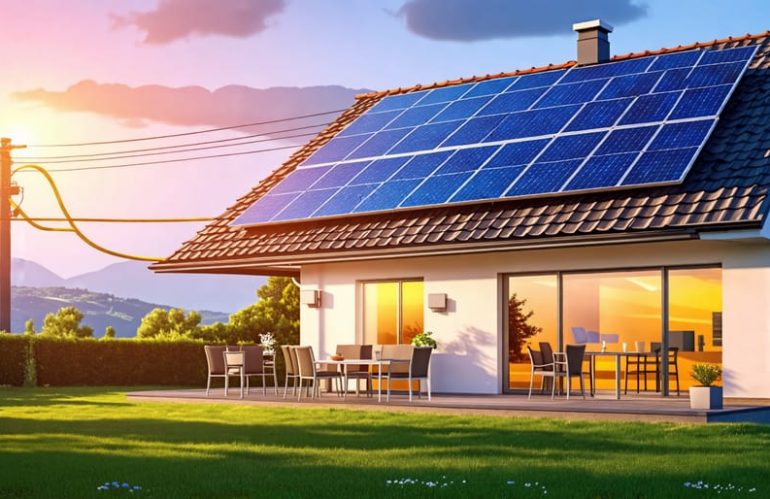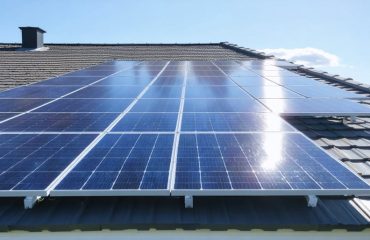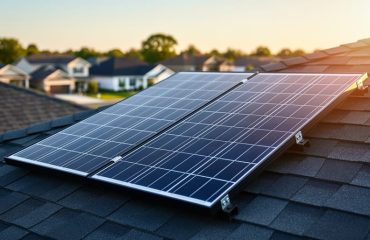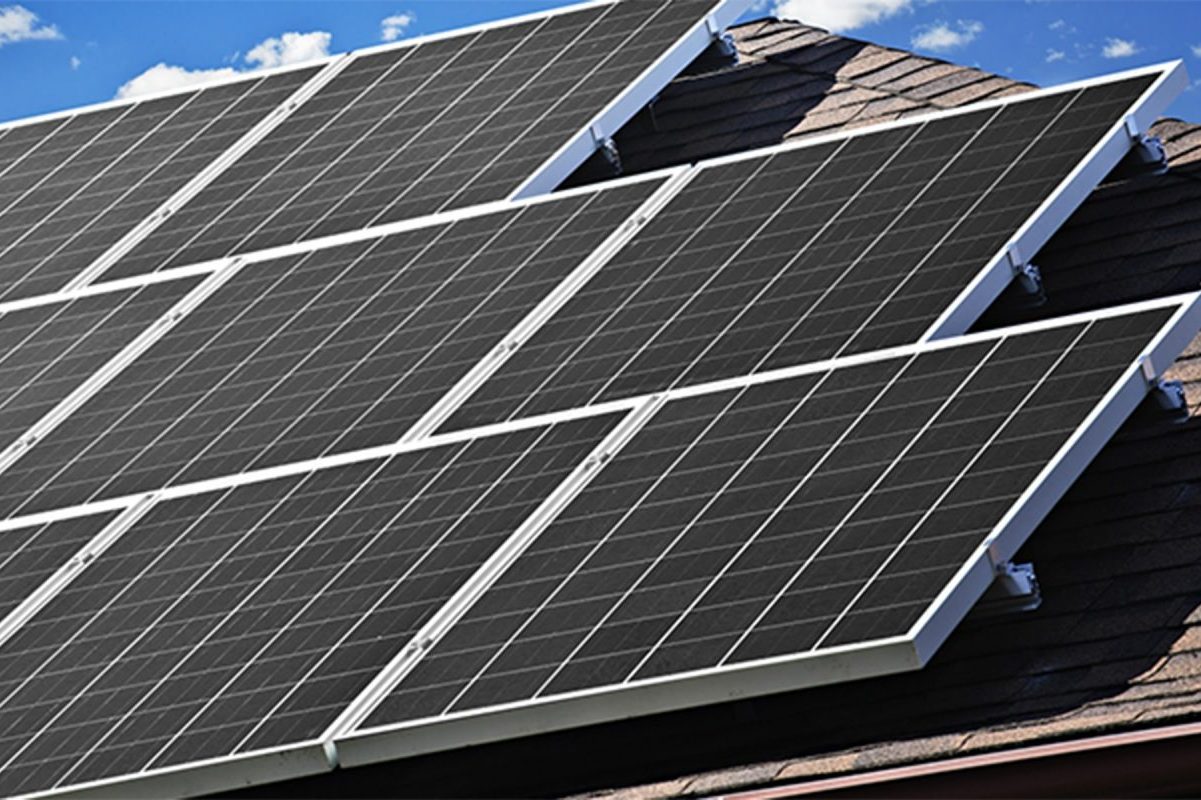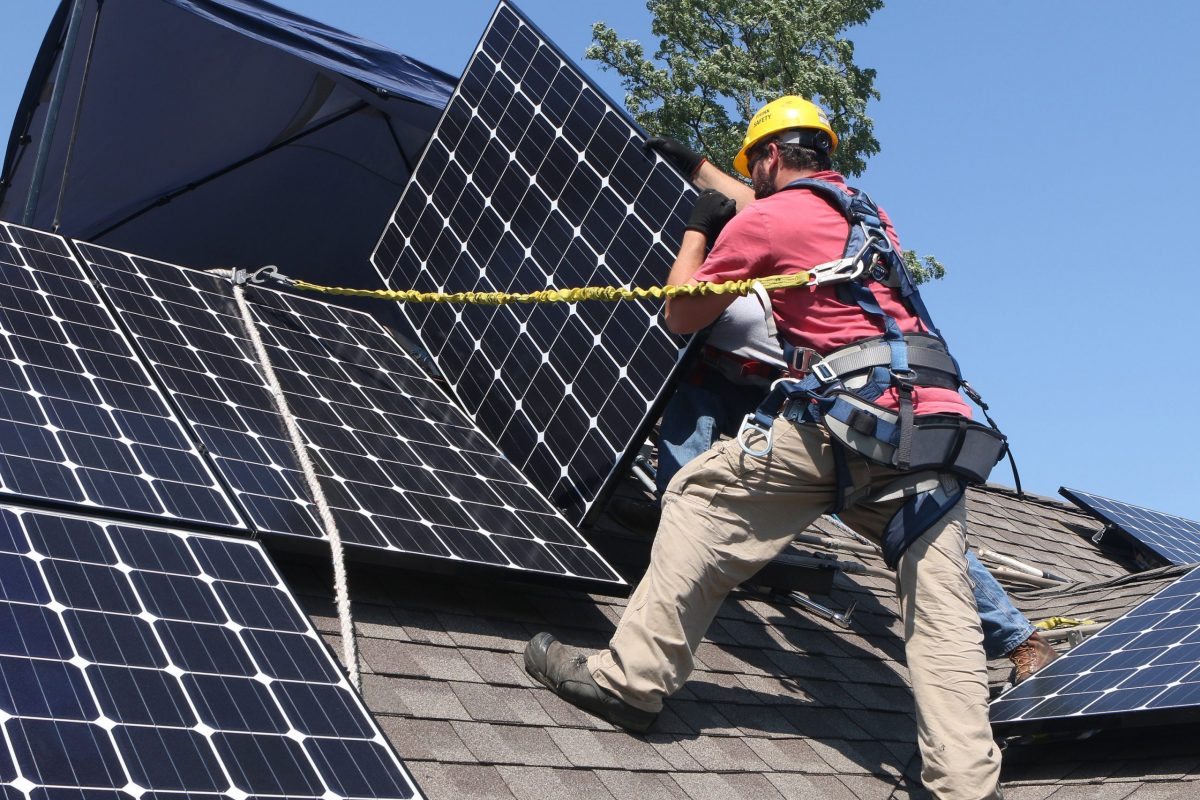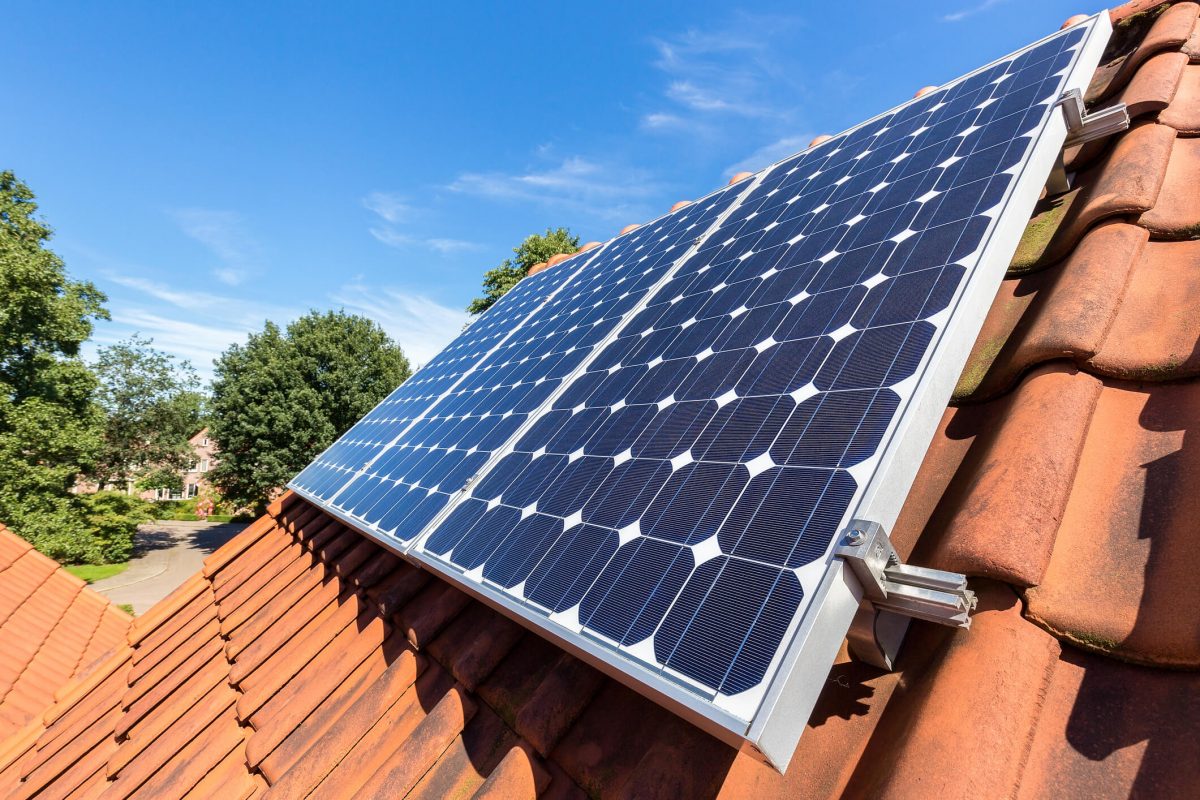Maximize your solar investment by connecting your solar panels to the national grid. Slash energy bills with net metering by selling excess power back to the grid, effectively earning credit and lowering monthly expenses. Optimize your system’s efficiency by monitoring energy usage, ensuring solar panels produce maximum output for your household and grid contributions. Research available incentives, such as tax credits and rebates, that enhance financial benefits, making the initial investment more feasible. Educate yourself on common myths like limited energy production during cloudy days; modern solar systems efficiently harness energy in diverse weather conditions, ensuring consistent savings.
How Solar Panels Integrate with the National Grid
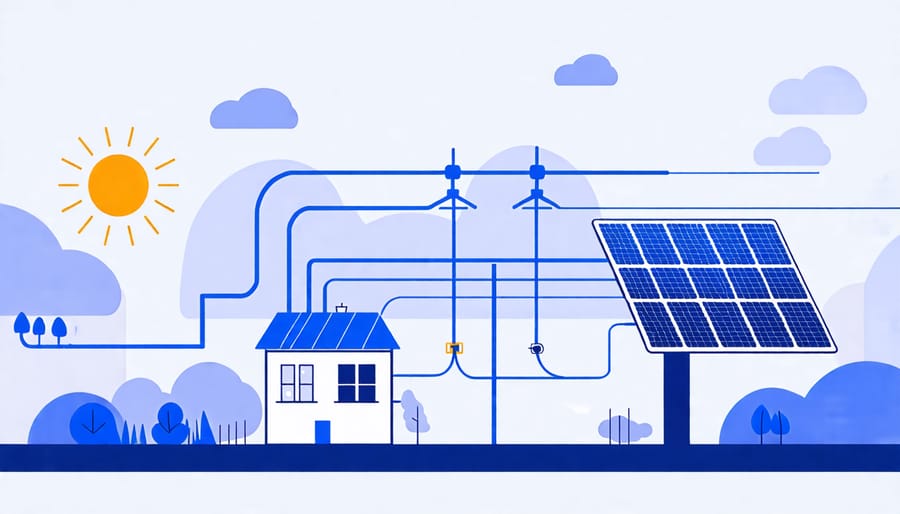
Understanding Grid-Tied Systems
A grid-tied system connects your solar panels directly to the national grid, allowing a seamless exchange of electricity. When your solar panels generate more power than your household needs, the excess can be fed back into the grid, often earning you credits or reducing your energy bill—a concept known as net metering. Conversely, when your solar panels produce less electricity, such as during nighttime or cloudy days, your home can draw power from the grid without disruption. This symbiotic relationship ensures you always have access to electricity while maximizing your solar system’s efficiency. At the heart of this system is inverter technology, which converts the solar-generated direct current (DC) into alternating current (AC) used by most home appliances. This setup not only contributes to a more sustainable energy practice by utilizing clean solar energy but also offers significant financial benefits by reducing reliance on traditional, often more expensive, electricity sources.
Net Metering: How It Benefits Homeowners
Net metering is a system that allows homeowners with solar panels to feed excess electricity back into the national grid. When your solar panels produce more energy than you use, the extra power is sent to the grid, and you receive a credit on your electricity bill. This means that during cloudy days or at night, you can use these credits to draw power from the grid, effectively reducing your energy costs. Net metering can significantly lower your electricity bills because it compensates you for the renewable energy you supply while allowing you to maintain a connection to the grid for your energy needs. Many homeowners find that over time, net metering can lead to substantial savings, and in some cases, even eliminate their electricity bills entirely. By taking advantage of net metering, you not only reduce your carbon footprint but also enhance your home’s energy efficiency. It’s a win-win for both your wallet and the environment, making solar panels a smart investment for sustainable living.
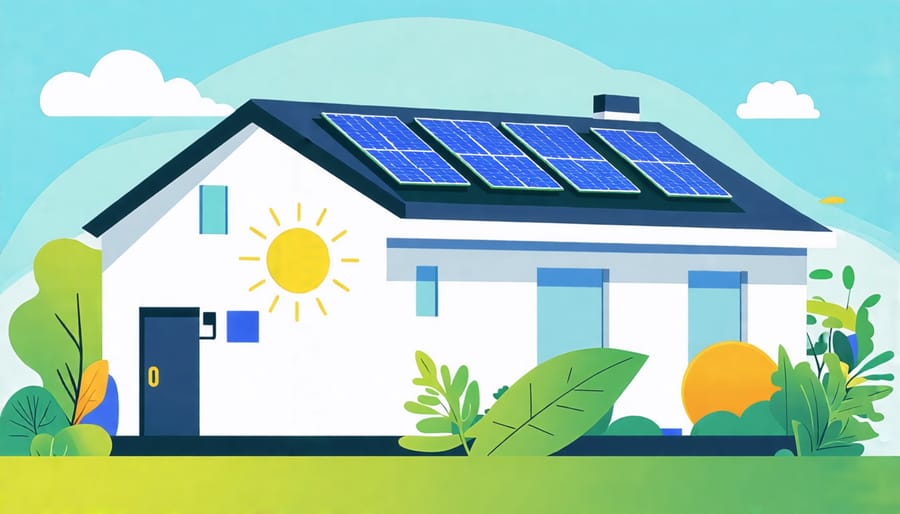
Financial and Environmental Benefits
Cutting Energy Bills and Earning Credits
Switching to solar energy is a smart move for homeowners looking to reduce their energy bills and help the environment at the same time. By installing solar panels, you can generate your own electricity and lower your reliance on the national grid. Not only does this cut down on monthly utility bills, but the excess energy produced can often be fed back into the grid, allowing you to earn credits. These credits can offset the costs when your system isn’t producing, such as during nighttime or cloudy days. The financial benefits are substantial, turning what might have seemed like a hefty upfront cost into a savvy long-term financial choice. With plentiful solar financing options, solar installations have become much more accessible. Ultimately, an investment in solar panels can lead to significant savings and even profits, making it an appealing option for many eco-conscious homeowners eager to see those benefits reflected in their wallets.
Reducing Carbon Footprint
Solar panels are instrumental in reducing a household’s carbon footprint, marking a significant step towards a more sustainable future. By harnessing the sun’s renewable energy, homeowners can decrease their reliance on fossil fuels, which are the main culprits of greenhouse gas emissions. This shift not only contributes to environmental preservation but also promotes cleaner air and a healthier planet. Unlike traditional energy sources that emit carbon dioxide, solar panels generate electricity without any direct emissions, aligning with global efforts to combat climate change.
Moreover, the use of solar energy can synergize with the national grid, further optimizing energy efficiency. Homeowners can produce their own clean power and even return surplus energy to the grid, potentially reducing community-wide emissions. This process not only supports national energy infrastructure but also empowers individuals with significant financial incentives. Lower electricity bills and various government rebates or tax incentives make solar panels a savvy investment. Embracing solar technology is not just an environmental choice but a financially beneficial one, reshaping how we think about energy consumption.
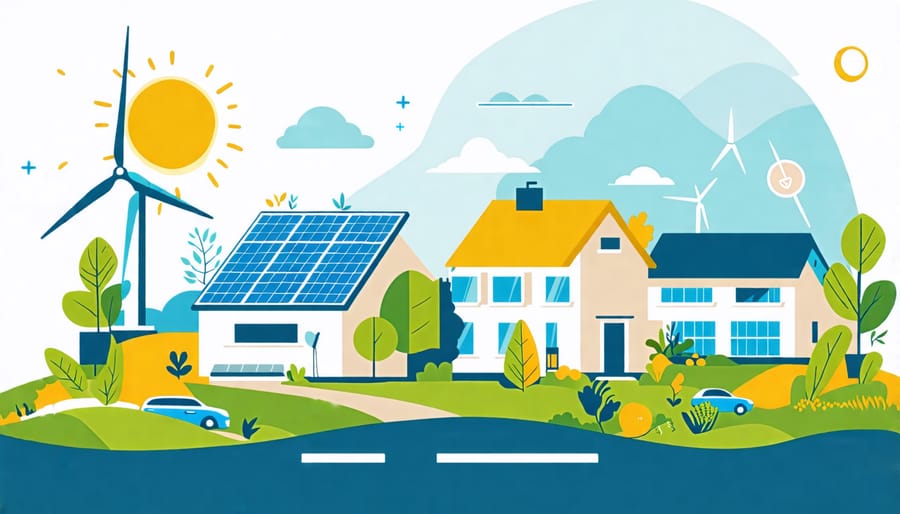
Myths About Solar Panels and the Grid
Myth 1: Solar Panels Are Ineffective in Cloudy Areas
Many people believe that solar panels are ineffective in cloudy areas, but this is simply not true. Solar panels work by capturing photons from sunlight, and they can still generate electricity on overcast days. In fact, countries like Germany, known for their cloudy weather, are leading in solar energy production. Even on cloudy days, solar panels can produce up to 25% of their typical output, which can still significantly reduce your reliance on the traditional power grid. Besides the environmental benefits, this translates to lower energy bills, making solar panels a smart choice in any climate. By hooking up to the national grid when more energy is produced than used, homeowners can capitalize on excess production, further emphasizing the financial and ecological benefits of adopting solar energy systems.
Myth 2: The Grid Cannot Handle Increased Solar Capacity
Contrary to the myth that the national grid can’t handle increased solar capacity, modern grids are more than capable of integrating solar energy, offering substantial benefits to homeowners. As solar panels convert sunlight into electricity, any excess energy can be redirected to the grid, contributing to a more stable and resilient energy system. Recent advancements in grid technology and the implementation of smart grids enhance this capability, allowing for efficient management of fluctuating energy inputs from solar sources. For homeowners, this means financial benefits through programs like net metering, where you can earn credits or reduce your energy bills by supplying surplus solar power back to the grid. Embracing solar energy not only complements the grid but also supports a sustainable and economical energy future.
Future Prospects and Innovations
Emerging Technologies
Emerging technologies are revolutionizing the integration of solar panels with the national grid, making it more efficient and financially beneficial for homeowners. Innovations like smart inverters and advanced grid management systems enhance energy efficiency by optimizing the flow of solar energy between homes and the grid. These systems can automatically adjust energy use, maximizing savings and reducing reliance on non-renewable sources. Additionally, energy storage solutions, such as high-capacity batteries, allow homeowners to store excess solar energy for later use, further cutting down energy costs. By embracing these technologies, you can make sustainable living both eco-friendly and budget-friendly.
Policy and Infrastructure Support
Governments worldwide are implementing supportive policies to boost solar energy adoption, recognizing both its environmental and financial benefits. Many offer incentives such as tax credits, rebates, and grants to homeowners, making solar panel installations more affordable and accessible. Additionally, net metering policies enable homeowners to earn credits by contributing excess solar energy back to the national grid, effectively lowering their energy bills. Investments in grid infrastructure also ensure a seamless integration of solar systems, maintaining stable energy supply and promoting sustainability. By adopting these advancements, homeowners can significantly reduce their carbon footprint and enjoy long-term savings.
Conclusion
As we conclude our exploration into the integration of solar panels with the national grid, it’s clear that the collaboration offers significant benefits for both the environment and homeowners. By harnessing the sun’s power and sending surplus energy back to the grid, solar panels help reduce reliance on fossil fuels, decrease carbon footprints, and promote a cleaner, more sustainable future. Homeowners can enjoy considerable financial advantages, including reducing energy bills and potentially earning from excess energy production. This not only offsets installation costs but also enhances property value over time.
Moreover, modern advancements and governmental incentives make solar installation more accessible and affordable than ever, further dispelling myths about high entry barriers. Embracing this technology empowers homeowners to contribute positively to the environment while enjoying increased energy independence and enhanced household efficiency. As we move towards a future driven by sustainable choices, integrating solar panels with the national grid stands out as a practical, advantageous step. It encourages a community-oriented approach to energy consumption that benefits everyone, reaffirming the immense value and potential of solar energy in shaping a more sustainable and economically viable future for all.

